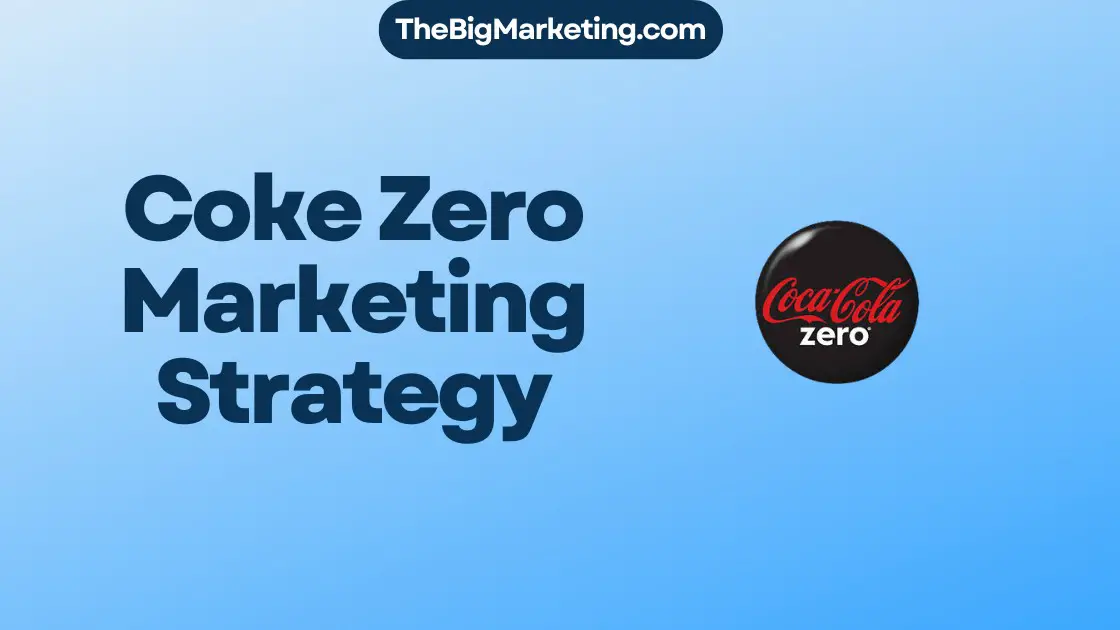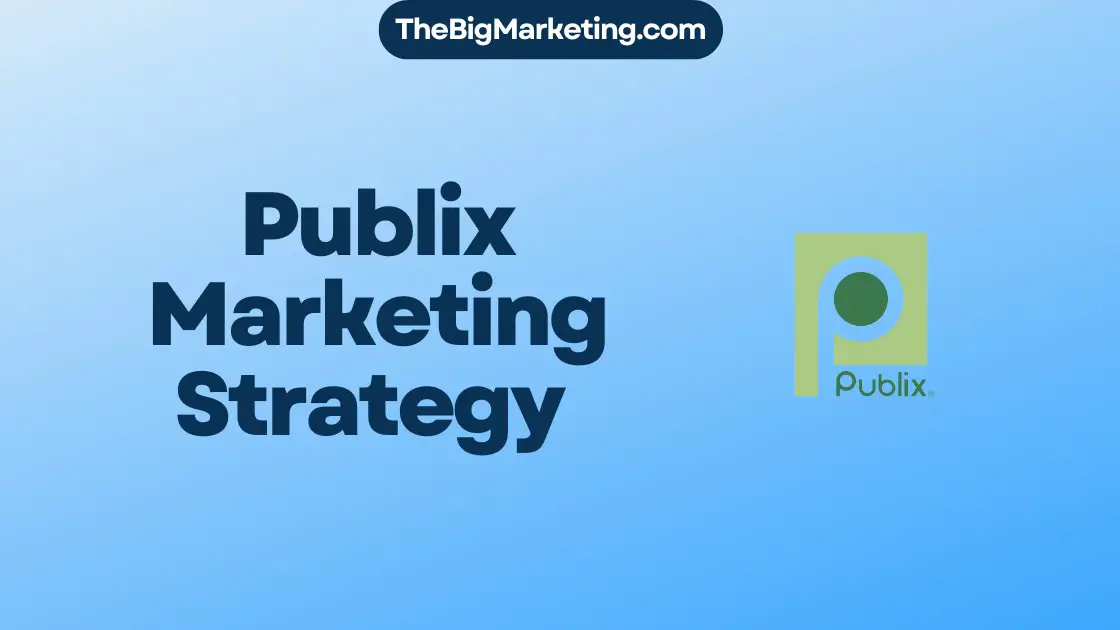A 360 Marketing Strategy is a comprehensive approach that utilizes all available online tools and channels to ensure a brand’s visibility and create a seamless customer experience. It covers everything from social media to emails, websites, and ads, allowing businesses to connect with customers wherever they are. This strategy aims to fill in the gaps in marketing, reach a larger audience, and provide a top-notch experience for customers. By implementing integrated tactics and focusing on customer journey success, businesses can achieve robust ROI and maximize their marketing efforts.
Key Takeaways:
- A 360 Marketing Strategy encompasses all available online tools and channels to ensure visibility and create a seamless customer experience.
- Integrated tactics and a focus on customer journey success are crucial for achieving robust ROI.
- By filling in marketing gaps and reaching a larger audience, businesses can maximize their marketing efforts.
- A well-executed 360 Marketing Strategy connects businesses with customers wherever they are, increasing brand visibility and customer satisfaction.
- Regular monitoring, tracking, and optimization are essential to ensure ongoing success and adapt to changing customer needs.
What is a 360 Marketing Strategy?
A 360 Marketing Strategy is a comprehensive and holistic approach to marketing that encompasses multiple channels and touchpoints to reach a target audience. This strategy goes beyond traditional marketing methods and incorporates integrated marketing communications, multichannel marketing, and an omnichannel strategy.
By utilizing a 360 Marketing Strategy, businesses aim to provide a seamless and consistent brand experience across all platforms and channels. This ensures that customers have a positive interaction with the brand at every touchpoint, leading to higher customer satisfaction and loyalty.
This strategic approach allows businesses to effectively engage their target audience by leveraging various marketing channels and tactics. Integrated marketing communications enable consistent messaging and branding, while multichannel marketing ensures that the brand reaches customers through different platforms and touchpoints.
Additionally, an omnichannel strategy focuses on creating a unified customer experience, where customers can seamlessly transition between channels while maintaining continuity in brand messaging and interaction.
By adopting a 360 Marketing Strategy, businesses can maximize their marketing efforts by reaching a broader audience, enhancing brand visibility, and driving better results. This comprehensive approach to marketing ensures that businesses can connect with their target audience at every stage of their customer journey, leading to increased engagement and conversions.
The Benefits of a 360 Marketing Strategy
A 360 Marketing Strategy offers numerous benefits to businesses. By integrating various marketing channels and touchpoints, businesses can effectively reach their target audience, regardless of their preferred platform or channel of interaction.
This integrated approach ensures that no potential lead or customer goes unnoticed, filling in marketing gaps and increasing the chances of attracting new customers. By leveraging different channels and touchpoints, businesses can expand their reach and engage with a wider audience.
Moreover, a 360 Marketing Strategy focuses on providing an improved customer experience by ensuring a consistent brand presence and messaging. This enhances customer satisfaction, fosters trust, and encourages repeat business.
By adopting a comprehensive marketing strategy, businesses can reap the benefits of a cost-effective approach that maximizes their marketing efforts. A well-executed 360 Marketing Strategy allows businesses to optimize their customer journey, drive better results, and achieve a robust return on investment (ROI).
Benefits of a 360-Degree Marketing Campaign
Implementing a 360-Degree Marketing Campaign offers several business benefits. This comprehensive approach fills in marketing gaps, ensuring that no potential leads slip through the cracks. By covering all marketing bases, businesses can reach a larger audience, increasing their chances of attracting new customers.
A 360-Degree Marketing Campaign focuses on providing an improved customer experience, leading to higher customer satisfaction and loyalty. By engaging customers at every touchpoint and delivering consistent messaging, businesses can create a seamless journey for their audience.
In addition to improving customer experience, a 360-Degree Marketing Campaign offers cost-effectiveness. By utilizing integrated tactics and leveraging various marketing channels, businesses can maximize their marketing efforts and achieve significant results without overspending.
Creating a Cohesive Customer Experience
One of the key benefits of a 360-Degree Marketing Campaign is the ability to create a cohesive customer experience. By implementing integrated tactics across multiple channels, businesses can ensure that their messaging and branding remain consistent throughout the customer journey.
Whether it’s a social media post, email newsletter, or website content, every interaction with the brand contributes to the overall customer experience. This consistency builds trust, establishes brand identity, and improves customer satisfaction.
A cohesive customer experience also allows businesses to understand their customers better. By tracking customer interactions across different touchpoints, businesses can gain valuable insights into customer behavior, preferences, and needs. This data helps in tailoring marketing efforts to specific customer segments, leading to more personalized and relevant messaging.
Reaching a Larger Audience
Another significant benefit of a 360-Degree Marketing Campaign is the ability to reach a larger audience. By covering all marketing bases and utilizing various channels and touchpoints, businesses can expand their reach and attract new customers.
A 360-Degree Marketing Campaign fills in marketing gaps, ensuring that no potential leads go unnoticed. By diversifying marketing tactics and being present on multiple platforms, businesses increase their chances of reaching their target audience at different stages of the customer journey.
The expanded reach provided by a 360-Degree Marketing Campaign not only attracts new customers but also strengthens the brand’s visibility and presence in the market. A broader audience exposure leads to increased brand recognition and can make the brand a top choice when customers are ready to make a purchase.
Achieving Significant Results
By implementing a 360-Degree Marketing Campaign, businesses can achieve significant results in terms of customer acquisition, engagement, and loyalty. The comprehensive approach ensures that marketing efforts are maximized, leading to a higher return on investment.
With the ability to target specific customer segments through integrated tactics, businesses can deliver highly relevant and personalized messaging. This targeted approach improves campaign effectiveness and drives better results compared to fragmented marketing efforts.
Furthermore, an improved customer experience resulting from a 360-Degree Marketing Campaign leads to higher customer satisfaction, loyalty, and advocacy. Satisfied customers are more likely to recommend the brand to others, leading to word-of-mouth marketing and organic growth.
In summary, a 360-Degree Marketing Campaign offers numerous benefits to businesses. From filling in marketing gaps and improving the customer experience to reaching a larger audience and achieving significant results, this comprehensive approach maximizes marketing efforts and drives success in today’s competitive landscape.
How to Make an Effective 360° Digital Marketing Campaign?
Creating an effective 360° digital marketing campaign requires careful planning and strategic execution. By following these key steps, businesses can maximize their marketing efforts and achieve desired results.
Step 1: Understand Your Target Audience
One crucial aspect of a successful 360° digital marketing campaign is having a deep understanding of your target audience. Gathering relevant data on their preferences, behaviors, and demographics can provide valuable insights that help tailor the campaign to their specific needs and interests. By understanding your target audience, you can create compelling content and deliver a personalized experience that resonates with them.
Step 2: Choose the Right Advertising Platforms and Channels
With numerous advertising platforms and channels available, it’s essential to choose the ones that align with your target audience’s preferences and engagement habits. Research and determine where your audience is most active. Whether it’s search engines, social media platforms, or industry-specific websites, selecting the right channels allows you to reach the right people at the right time, increasing the campaign’s effectiveness.
Step 3: Focus on Search Engine Optimization (SEO)
Search engine optimization (SEO) plays a significant role in improving online visibility and driving organic traffic to your website. By conducting keyword research and optimizing your website’s content, metadata, and structure, you can improve your search engine rankings and attract qualified leads. SEO ensures that your campaign is discoverable by potential customers actively searching for products or services related to your business.
Step 4: Increase Social Media Engagement
Social media platforms offer a vast opportunity to engage with your target audience and build a strong online presence. By creating relevant and engaging content, you can increase social media engagement, foster community interaction, and drive customer loyalty. Sharing valuable insights, running contests and promotions, and encouraging user-generated content can help expand your reach and connect with potential customers on a more personal level.
Step 5: Analyze, Track, and Optimize
Analyze and track the performance of your digital marketing campaign regularly. Use key performance indicators (KPIs) such as website traffic, click-through rates, conversion rates, and engagement metrics to evaluate its effectiveness. By leveraging analytics data, you can identify areas for improvement and optimize your campaign accordingly. Experiment with different strategies, test new approaches, and fine-tune your tactics to achieve optimal results.
Step 6: Continuously Refine and Adapt
A successful 360° digital marketing campaign is an ongoing process of refinement and adaptation. Monitor market trends, consumer behaviors, and your competitors to stay ahead. Continuously refine your campaign based on changing customer needs and preferences. Flexibility and adaptability are key to remaining competitive and maximizing your marketing efforts.
| Benefits of an Effective 360° Digital Marketing Campaign |
|---|
| Increase brand visibility and awareness |
| Reach a wider audience |
| Improve customer engagement and loyalty |
| Drive targeted traffic to your website |
| Increase conversions and ROI |
Leveraging Data and Insights for a Successful 360 Marketing Strategy
In order to build a successful 360 Marketing Strategy, businesses must leverage data and insights to gain a profound understanding of their target audience. By analyzing consumer actions, requirements, and preferences, businesses can develop a strategic brand strategy that resonates with their customers.
Utilizing data and insights allows businesses to identify customer trends and behaviors, enabling them to deliver more customized shopping experiences. This holistic approach to marketing empowers businesses to maximize their audience reach and engage customers across multiple platforms and channels.
By tapping into the power of data and insights, businesses can gain a competitive edge in today’s digital landscape. Here are a few key strategies for leveraging data and insights in a 360 Marketing Strategy:
1. Conduct Consumer Research
An in-depth understanding of consumers is crucial for crafting a successful 360 Marketing Strategy. Businesses should conduct thorough research to gain insights into consumer preferences, demographics, and buying behaviors. This research can include surveys, focus groups, and data analysis to extract valuable information.
2. Analyze Customer Journey
Understanding the customer journey is essential for mapping out effective marketing touchpoints. By analyzing the different stages of the customer journey, businesses can identify potential pain points, optimize customer experiences, and tailor their marketing messages accordingly.
3. Personalize Marketing Communications
Using data and insights, businesses can create personalized marketing communications that resonate with individual customers. By leveraging customer segmentation and personalization techniques, businesses can deliver targeted and relevant messages, maximizing the impact of their marketing efforts.
4. Optimize Marketing Channels
Data and insights can help businesses identify the most effective marketing channels for reaching their target audience. By analyzing consumer behavior and preferences, businesses can allocate their resources to channels that offer the highest potential for engagement and conversion.
5. Track and Measure Performance
Ongoing tracking and measurement of marketing performance are crucial for refining strategies and optimizing results. By monitoring key metrics and analyzing data, businesses can identify areas of improvement and make data-driven decisions to enhance their 360 Marketing Strategy.
By leveraging data and insights, businesses can unlock a wealth of opportunities to connect, engage, and convert customers. A strategic and data-driven approach will enable businesses to maximize their audience reach, enhance customer experiences, and drive the success of their 360 Marketing Strategy.
| Benefits of Leveraging Data and Insights | Strategies for Maximizing Audience Reach |
|---|---|
| – Understand consumer preferences and behaviors | – Conduct thorough consumer research |
| – Customize marketing messages and experiences | – Analyze the customer journey |
| – Optimize marketing channels for effectiveness | – Personalize marketing communications |
| – Track and measure performance for optimization | – Identify and target the right audience segments |
Creating a 360 Marketing Strategy That Drives Results
When it comes to creating a successful 360 Marketing Strategy, careful planning and execution are key. The first step for businesses is to understand their target audience and gather relevant data. By creating accurate customer personas, businesses can tailor their marketing strategy to the specific needs and preferences of their target audience. This enables them to deliver personalized and impactful messaging that resonates with their customers.
Defining the purpose and goals of the campaign is the next crucial step. Businesses should have a clear understanding of what they want to achieve and align their goals with the chosen marketing channels. Whether it’s increasing brand awareness, driving sales, or expanding market reach, the campaign objectives should guide the selection of marketing channels and tactics.
One essential aspect of a successful 360 Marketing Strategy is maintaining cohesion across all marketing channels. Consistency in messaging and branding is vital to provide a seamless customer experience. By ensuring that all touchpoints convey a unified message and brand identity, businesses can establish trust and credibility with their audience.
Regular monitoring and optimization of the campaign are crucial to drive results and achieve marketing objectives. Analyzing key performance indicators (KPIs) and campaign data allows businesses to identify areas for improvement and make data-driven decisions. By continuously optimizing the strategy based on insights gained from data analysis, businesses can enhance their marketing efforts and maximize their ROI.
Creating a 360 Marketing Strategy that drives results requires a strategic approach, a deep understanding of the target audience, and a cohesive campaign across all marketing channels. By focusing on these key elements, businesses can establish a strong presence, engage their target audience effectively, and achieve their marketing goals.
The Role of SEO in a 360 Marketing Strategy
When it comes to implementing a comprehensive 360 Marketing Strategy, SEO plays a crucial role in maximizing online visibility and driving organic traffic to a website. By incorporating effective SEO practices, businesses can ensure that their target audience finds them easily and that their website appears prominently in search engine results.
One of the key components of SEO is conducting thorough keyword research. With keyword research, businesses can identify the specific terms and phrases that potential customers are using when searching for products or services. By optimizing website content with these relevant keywords, businesses can increase their chances of appearing in search engine results for those specific queries.
Website optimization is another vital aspect of SEO in a 360 Marketing Strategy. This includes optimizing the website’s URL structure, title tags, and meta descriptions. By optimizing these elements, businesses can improve search engine rankings and increase the likelihood of attracting clicks from potential customers. Additionally, website optimization focuses on creating a user-friendly website that provides a smooth and intuitive browsing experience.
Benefits of Incorporating SEO
Including SEO in a 360 Marketing Strategy offers several benefits to businesses:
- Improved Online Visibility: By optimizing website content and structure, businesses can improve their search engine rankings and increase their online visibility, making their brand more discoverable to their target audience.
- Increase in Organic Traffic: When a website appears higher in search engine results, it attracts more organic traffic, which is key to attracting potential customers who are actively seeking products or services.
- Targeted Audience Reach: Through effective SEO practices, businesses can reach their target audience directly, ensuring that their website appears in front of the right people who are more likely to convert into customers.
- Cost-Effective Marketing: SEO provides a cost-effective marketing solution as it focuses on organic search results rather than paid advertising. By optimizing a website and creating valuable content, businesses can attract relevant traffic without spending heavily on advertising.
With the increasing competition in the digital landscape, a well-executed SEO strategy is essential for businesses to gain a competitive edge and succeed in their 360 Marketing Strategy. By prioritizing SEO in their marketing efforts, businesses can maximize their online visibility, increase organic traffic, and attract their target audience effectively.
| Benefits of SEO in a 360 Marketing Strategy: | |
|---|---|
| Improved online visibility | Increased organic traffic |
| Targeted audience reach | Cost-effective marketing |
| Social media channels | Benefits |
|---|---|
| Large user base, effective targeting options, diverse ad formats. | |
| High engagement, visual storytelling, influencer partnerships. | |
| Real-time updates, customer service, brand personality. | |
| Professional network, B2B marketing, industry thought leadership. |
Social media is a key component of a successful 360 Marketing Strategy. It provides businesses with a platform to connect and engage with their target audience, build a community, and increase brand visibility. By leveraging the power of social media, businesses can effectively communicate their brand message and establish long-lasting relationships with their customers.
Social Media Engagement
Social media engagement refers to the interactions and actions taken by users on social media platforms, such as likes, comments, shares, and clicks. It is a vital metric for measuring the effectiveness of a social media marketing campaign. By creating compelling and targeted content, businesses can encourage social media engagement, which helps in building brand awareness, increasing reach, and driving website traffic.
One effective way to boost social media engagement is by utilizing social media management tools. These tools allow businesses to schedule and publish content across multiple social media channels, monitor engagement metrics, and analyze audience behavior. By staying organized and strategic in their social media efforts, businesses can maximize engagement and ensure consistent brand messaging.
Targeted Content
To effectively harness the power of social media, businesses need to create targeted content that resonates with their target audience. This involves understanding the preferences, interests, and behavior of the target audience and tailoring content accordingly. By creating content that provides value, solves problems, and aligns with the target audience’s needs, businesses can generate higher engagement and build stronger connections with their customers.
Visual content is particularly effective on social media platforms. Images and videos capture attention, evoke emotions, and tell stories. By incorporating visual storytelling into their social media strategy, businesses can create a memorable brand presence and effectively convey their brand message to their audience. Additionally, partnering with influencers who have a strong presence on social media can help in amplifying brand reach and increasing engagement.
Influencer Partnerships
Collaborating with influencers has become a popular method for businesses to leverage social media for their marketing efforts. Influencers are individuals who have a significant following and a strong influence over their audience’s purchasing decisions. By partnering with relevant influencers in their industry or niche, businesses can tap into the influencers’ established networks and benefit from their credibility and expertise.
Influencer partnerships can take various forms, such as sponsored content, product reviews, or influencer takeovers. These collaborations allow businesses to reach a wider audience, connect with potential customers, and build trust and credibility. When selecting influencers to partner with, it’s essential to align their values and target audience with the brand’s objectives to ensure a meaningful and authentic partnership.
In conclusion, social media plays a crucial role in a 360 Marketing Strategy. By harnessing the power of social media, businesses can effectively engage with their target audience, build brand visibility, and drive results. It is important to choose the right social media channels based on the preferences and behavior of the target audience, create targeted content that resonates with them, and explore influencer partnerships to amplify brand reach. By incorporating social media into their marketing strategy, businesses can enhance their overall 360 Marketing Strategy and maximize their marketing efforts.
The Role of Content Marketing in a 360 Marketing Strategy
Content marketing is an essential component of a successful 360 Marketing Strategy. By creating valuable and relevant content, businesses can position themselves as industry leaders and establish trust with their target audience. Effective content marketing involves addressing customer problems and providing actionable solutions, thereby building a strong brand reputation.
To engage the target audience effectively, content should be diversified across various formats. This includes blog posts, videos, infographics, and case studies, catering to different preferences and capturing the attention of a wider audience. By offering a variety of content formats, businesses can maximize engagement and deliver information in a way that resonates the most with their audience.
Implementing content marketing into a 360 Marketing Strategy enables businesses to create a consistent and engaging brand experience across multiple channels. It allows them to connect with their audience on a deeper level by providing valuable insights and solutions to their problems. When content is informative, useful, and addresses customer pain points, it increases the likelihood of capturing their attention and driving action.
The Benefits of Content Marketing in a 360 Marketing Strategy
1. Building Trust and Authority: Valuable content establishes businesses as experts in their industry, gaining the trust and respect of their target audience. By consistently delivering high-quality content, businesses can position themselves as trusted sources of information and solutions.
2. Customer Problem-Solving: Content marketing focuses on addressing customer pain points and providing practical solutions. By understanding the challenges faced by their audience and delivering helpful content, businesses can establish themselves as problem-solvers and build stronger relationships with their customers.
3. Versatility and Flexibility: Content marketing allows businesses to experiment with various formats, such as blog posts, videos, and infographics. This versatility enables them to adapt to different platforms and cater to different audience preferences effectively.
4. Maximizing Engagement and Reach: With a breadth of content formats, businesses can effectively engage their target audience and reach them through multiple channels. For example, videos can be shared on social media platforms, blog posts can be optimized for search engines, and infographics can be shared on industry websites.
By incorporating content marketing into their 360 Marketing Strategy, businesses can create a compelling brand narrative, drive engagement, and ultimately achieve their marketing goals.
Monitoring, Tracking, and Optimizing a 360 Marketing Strategy
Monitoring and tracking the results of a 360 Marketing Strategy are essential to evaluate the effectiveness of the campaign. By regularly analyzing campaign data and measuring key performance indicators (KPIs), businesses can make data-driven decisions to optimize the strategy and ensure its ongoing success.
Through comprehensive data analysis, businesses can identify areas of improvement and make necessary adjustments to their marketing approach. This involves closely monitoring campaign results, analyzing customer behavior, and assessing the impact of different marketing channels and tactics. By understanding the strengths and weaknesses of the strategy, businesses can refine their campaigns and achieve better results.
Optimizing a 360 Marketing Strategy requires flexibility and adaptability to meet changing customer needs and market trends. By staying up-to-date with industry developments and monitoring consumer behaviors, businesses can modify their strategies accordingly. This might involve experimenting with new approaches, such as incorporating emerging platforms or techniques, to stay ahead of the competition and better engage the target audience.
Maximizing the return on marketing investment is a key goal of any business. By continually monitoring, tracking, and optimizing the 360 Marketing Strategy, businesses can ensure that their resources are allocated wisely and effectively. Strategic allocation of resources, based on data-driven insights, helps businesses optimize their marketing efforts and maximize campaign performance.
Benefits of Monitoring and Tracking
Monitoring and tracking campaign results provide several benefits to businesses:
- Identifying trends and patterns: By monitoring campaign data, businesses can identify trends and patterns that can inform future marketing strategies and initiatives.
- Measuring campaign success: Tracking the performance of a 360 Marketing Strategy helps businesses assess the success of their campaigns and measure the impact of marketing efforts.
- Evaluating ROI: Monitoring and tracking campaign results enable businesses to analyze the return on investment (ROI) and make informed decisions about resource allocation.
- Identifying areas for improvement: By closely monitoring campaign data, businesses can identify areas where their marketing strategy can be improved and make necessary adjustments.
Optimization Strategies for a 360 Marketing Strategy
Optimizing a 360 Marketing Strategy involves implementing various strategies to enhance campaign performance and maximize results:
- Continuous monitoring: Regularly monitoring campaign data and performance allows businesses to identify trends, detect anomalies, and make data-driven decisions.
- Data analysis: Conducting thorough data analysis helps businesses gain insights into customer behaviors, preferences, and interactions, enabling them to optimize their marketing approach based on these findings.
- Adapting to market trends: Keeping up with the latest market trends and consumer behaviors allows businesses to adjust their strategies to reach their target audience effectively and stay ahead of competitors.
- Experimentation: Trying out new marketing approaches and techniques can help businesses discover innovative ways to engage their audience, attract new customers, and optimize their campaign performance.
- Continuous optimization: Regularly assessing the effectiveness of different marketing channels and tactics allows businesses to optimize their approach, ensuring the best use of resources and maximizing results.
By implementing effective monitoring, tracking, and optimization strategies, businesses can continuously improve their 360 Marketing Strategy, adapt to changing market dynamics, and achieve their marketing goals.
| Key Metrics to Monitor | Benefits |
|---|---|
| Conversion rate | Measure the effectiveness of marketing efforts in converting leads into customers. |
| Click-through rate (CTR) | Evaluate the performance of advertisements and assess their ability to generate interest. |
| Customer acquisition cost (CAC) | Determine the cost of acquiring new customers and optimize marketing spend accordingly. |
| Return on investment (ROI) | Assess the profitability and success of the marketing campaign in generating revenue and achieving business objectives. |
| Customer lifetime value (CLTV) | Measure the long-term value of a customer and identify opportunities for customer retention and loyalty. |
By monitoring and analyzing these key metrics, businesses can make data-driven decisions, optimize their marketing strategies, and drive better results.
Conclusion
A 360 Marketing Strategy is an integrated approach that allows businesses to effectively reach their target audience and maximize their marketing efforts. By covering all marketing bases and utilizing various channels and touchpoints, businesses can create a seamless customer experience and improve customer satisfaction.
Key elements of a successful 360 Marketing Strategy include understanding the target audience, choosing the right marketing channels, optimizing for search engines, and leveraging social media and content marketing. By deeply understanding the target audience, businesses can tailor their messaging and offerings to meet their needs and preferences.
Regular monitoring, tracking, and optimization are crucial to ensure ongoing success and adapt to changing customer needs. By analyzing campaign data and making data-driven decisions, businesses can continuously improve their strategy and achieve customer experience optimization. With a well-executed 360 Marketing Strategy, businesses can optimize their customer journey, drive results, and maximize their marketing efforts.






